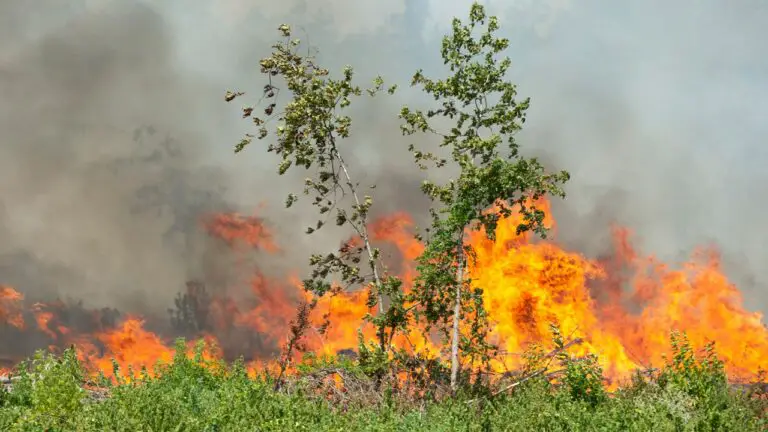Louisiana Battling Unprecedented Wildfires Amidst Familiar Challenges
A towering inferno sweeps through Louisiana, challenging communities already accustomed to dealing with floods and hurricanes during this time of year. This wildfire, among the largest in Louisiana’s history, continues its relentless march, endangering rural areas in its path.
The state has been gripped by an exceptional wildfire season fueled by relentless dry spells and scorching temperatures. Recent hurricanes have taken down vast pine plantation forests, turning them into a fiery fuel source for these blazes. In just this month, around 600 wildfires have ignited across the state, and authorities predict more to come in the near future.
“We’re not out of the woods yet. A dry September is on the horizon. So, we must unite and remain vigilant until the rain arrives… and then we can return to our normal lives,” emphasized Mike Strain, Louisiana’s Commissioner for Agriculture and Forestry, during a recent press conference.
The largest active fire, known as the Tiger Island Fire, has undergone a dramatic growth spurt over the weekend, now consuming a staggering 33,000 acres in southwestern Louisiana. This area is more land than Louisiana typically sees burned in an entire year. As of Tuesday morning, the fire is halfway under control.
The ferocity of the flames has forced the entire population of Merryville, a rural town near the Texas border with around 1,200 residents, to evacuate. Thankfully, no casualties have been reported, but the fire has damaged or destroyed at least 20 structures, including homes and barns.
More than a thousand brave firefighting personnel, some dispatched from neighboring states such as Alabama, Florida, Oklahoma, and Texas, have been battling these wildfires across Louisiana. This day also marks 18 years since the catastrophic Hurricane Katrina struck, as well as two years since Hurricane Ida wreaked havoc on the state.
As the firefighting teams make progress on one front, new fires ignite elsewhere on an almost daily basis. Over the last ten years, Louisiana has typically seen around 8,217 acres scorched by wildfires annually. However, this year has witnessed an alarming 60,000 acres already turned to ashes.
Officials sternly point out that many of these blazes could have been avoided if residents had heeded the statewide burn ban in effect since early August. In the area where the Tiger Island Fire rages, Beauregard Parish, more than 20 citations were issued on Monday alone for burn ban violations.
“Under these conditions, there’s simply no excuse for outdoor burning,” asserted Governor John Bel Edwards during a news conference.
While Louisiana is normally a bit dry during this season, half of the state is currently grappling with either “extreme” or “exceptional” drought, according to data from the National Oceanic and Atmospheric Administration. Additionally, the state has endured sweltering triple-digit temperatures throughout the summer. Earlier this month, Edwards declared a state of emergency due to the extreme heat.
Governor Edwards squarely attributes this alarming situation to climate change, fueled by factors like fossil fuel consumption, deforestation, and certain agricultural practices. Scientists warn that these factors lead to more frequent and prolonged spells of extreme weather, including searing temperatures. Edwards, who personally assessed the wildfire’s damage, suggests that the state might have to adapt to more frequent wildfires as the “new normal.” He also stressed the need for increased investment in resources, training, and personnel to combat future wildfires more effectively.

